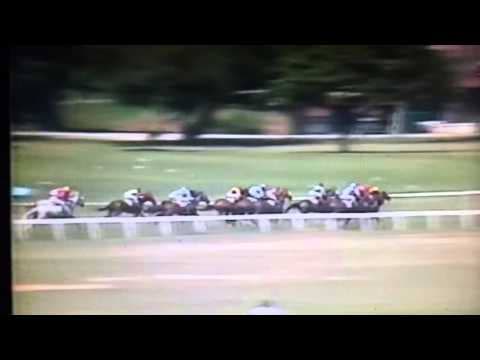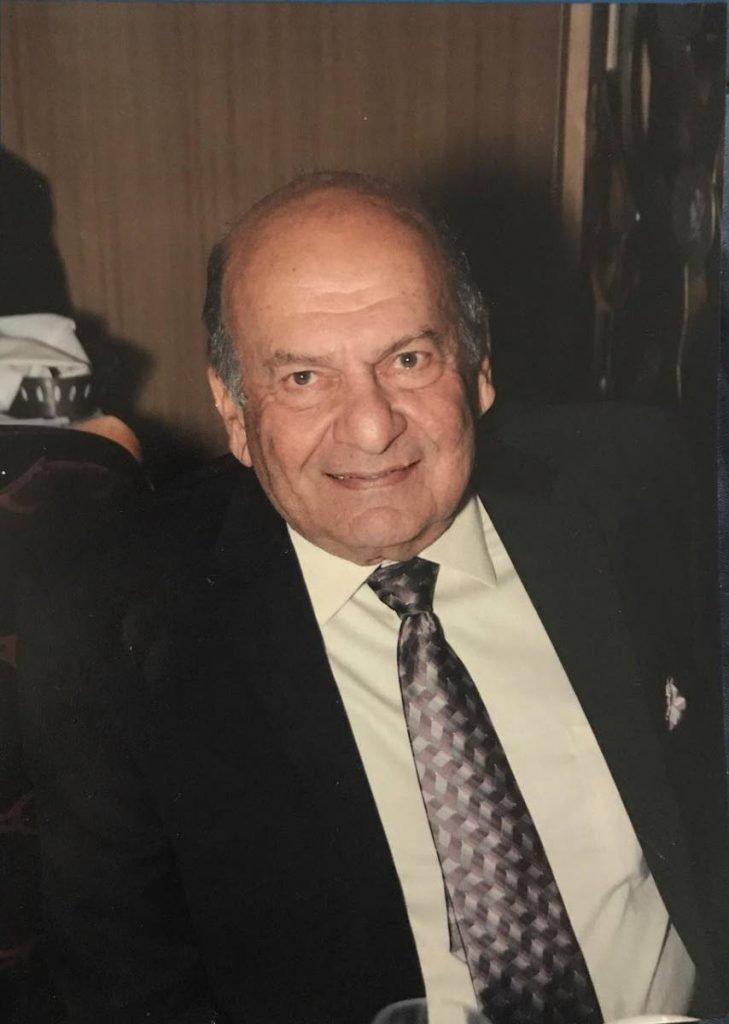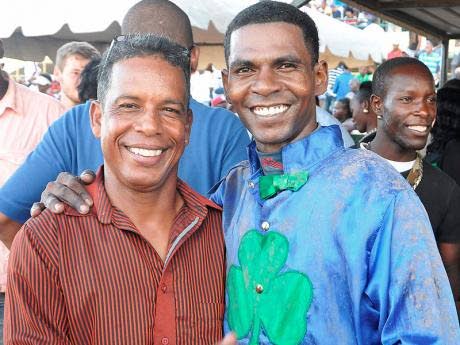Great times at the Savannah

THE QUEEN’S Park Savannah in Port of Spain was the main venue for horseracing in TT until races were centralised, to the Santa Rosa Park, Arima on April 1994.
Races were also staged at Arima and Union Park in Marabella, but the Savannah was the place to be, for all involved in racing (jockeys, trainers, owners, grooms) as well as the punters and fans of the ‘sport of kings’.
Recently, legendary trainer Joe Hadeed and jockey Brian Harding reminisced on their successes at the Savannah, and how the venue impacted on their careers.
What were your early memories of the Savannah?
Hadeed: I started going to the Savannah since 1952, when I was at Fatima College. A bunch of us, led by Joey Carew, used to go in the Savannah and watch horses gallop every morning before school. The first derby I looked at was (in) 1952 and I’ve seen every derby since then. I got interested by going in the Savannah with the boys.
In those days, we used to go opposite the Governor’s house. The horses came out from behind the paddock, by the Queen’s Park hotel. I fell in love with the horses and I spent 40 years of my life at the Savannah. I know every blade of grass in the Savannah. I don’t think there’s many people alive who I met in the Savannah.

When you said every day, even Christmas Day?
Hadeed: Christmas Day, that was a big day, because Boxing Day was races. (Hadeed mentioned that he only missed being at the Savannah when he was abroad, which was seldom).
Then I started to train horses. I started to work with Tom O’Brien, John’s father, he was a trainer and I used to work as his assistant. When he gave up, I took over the stable and I started to train. I got my license in 1970. The first horse I raced was a trainer one at Union Park, a horse called Aqueduct. I was stabled in the Savannah.
When I first went into the Savannah, they only had about 60 horses in the paddock in the Savannah. When we left the Savannah, they had about 200 in the same space. I made a lot of good friends in the Savannah. There had a lot of fellas who used to come there every morning. We used to lime and watch the horses work. All the trainers that I know from in the Savannah (are) dead now.
Where did he started off in the sport of horseracing?
Harding: I started off in Union Park and I got my licence in January 1982. I got my licence and there (was) racing in San Fernando. They had a three-day meet, and a six-day meet, and then they’ll go to Arima and then Port of Spain. They had different seasons for different tracks. It was fun, it was enjoyable because you always had competition between Arima, Port of Spain and San Fernando.

When was the season for Port of Spain, also in Arima and San Fernando?
Harding: Port of Spain always had the Christmas meeting (and) the summer meeting. I know Marabella had the Calypso meeting and the Easter meeting. Arima had the Whit Sun meeting. We had racing in Tobago also, I think in November.
What moments stood out for you at the Savannah?
Hadeed: The Derby was always a big thing. I won my first Derby in the Savannah, on a horse called El Camino in 1979. The Governor’s Cup was a big race. It used to start in front of Jerningham Avenue. (There were) crowds in the infield and in the outfield.
People used to walk to the Savannah for races, from Woodbrook, Newtown, Maraval, St Ann’s, Belmont, behind the bridge. Racing in the Savannah was a big thing. It was the home of horse racing. When I started to train, I had about five horses and I went up to 70, all in the Savannah. The cemetery was a big thing.
Harding: I had a lot of good memories in Port of Spain. My first derby winner was Flag Woman in 1991, then I won the last derby in the Port of Spain track (with) Renegade in 1993. I won a couple good races in Port of Spain and I rode for some very nice trainers (like Joe) Hadeed, Adolphus Cadiz, Mano ‘Killer’ Joseph. I appreciated what they did for me, I had a lot of success with them. Although I wasn’t based there, I rode with success.
Was it hard for jockeys like himself to compete in POS or was he able to hold his own and test his skills against the best?
Harding: Once you know the distance you’re going, and you know the track, you’ll get it easy. You must know where the half-mile is, where the two-furlong (mark) is, you will get it, it comes natural.
When racing was centralised to the Savannah, how did you feel?
Hadeed: I was addicted to the Savannah. It hurt me. For months after, I couldn’t even drive around the Savannah. I used to get emotional. But it was the best thing. What had happened, and people didn’t recognise, was that racing, and Carnival, were getting too big for the Savannah.
Racing got too big for the Savannah. Carnival, when I was a young boy, George Bailey’s band had 100-200, that was a big band. Carnival and racing got too big and one had to go, so we had to go. The ironic thing is after we left the Savannah, Carnival left for a few years. On the last day of the Christmas meeting, when Carnival was early, as soon as the last race was run, they used to start (putting) up the North Stand.
Racing there was great. We used to race clockwise. In Arima they race anti-clockwise, like (United States). You had to centralise racing, you had to build a dirt track. We used to race on turf. The Savannah was maintained by the Turf Club. It was great. After a race, the crowds used to come on the field. When you were leading in the horse, you had the crowds behind you. You had the public (Grand) stand and that used to be full and, on the big days, they had to close the gates. And you had to pay to go in.
Harding: Originally (racing) was to go to Caroni but that never materialised. The only alternative they had at that time was to go to Arima, which they did. Everybody accepted it because it (was) a step into the future. Racing in America is left-hand, it’s not right-hand.
In England it’s right-hand but, in America, there is turf and also there is dirt. We were trying to get two tracks to go the way like the Americans, which they did and that’s why we went to Arima. I don’t think they would ever go back to Port of Spain.
Do you wish that, for one day, you can see races at the Savannah again?
Hadeed: No. We’ve passed that stage. When we went to Arima, Arima was the country. Arima is like (POS) now. We can’t go back to the Savannah. We’re racing on a good track now. We have a very good plant, but they don’t have the money to maintain it. Once it’s properly maintained, there wouldn’t be any problem with Arima.
I used to live in St Ann’s, five minutes from the Savannah, every morning from five o’clock I used to go in the Savannah, leave at nine o’clock and go back on afternoons around four o’clock.
Harding: Everybody had loved there. There were more people. Everybody looked forward to going races at the Savannah. I don’t think that could come back right now. I don’t think that will ever happen again. (There) was one of the best Christmas meetings for horse racing that we ever had, at the Savannah.


Comments
"Great times at the Savannah"